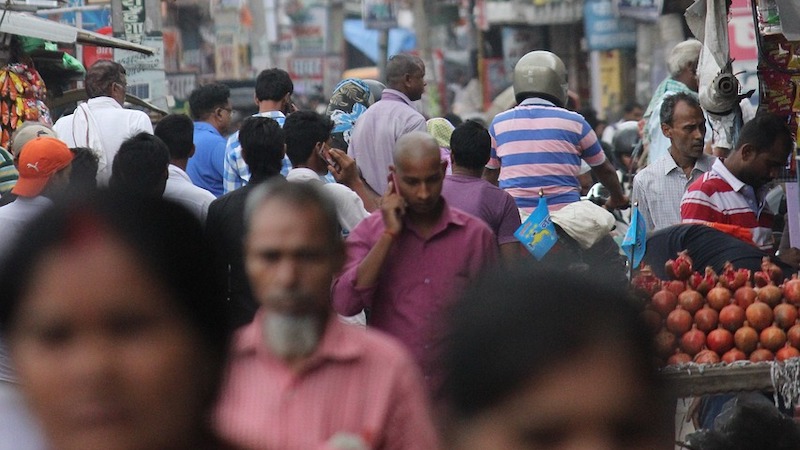How India’s Manufacturing Boom Hinders China’s Supply Chain Dumping – Analysis

Manufacturing in India, which slipped to negative growth during the COVID 19 period, made a sparkling growth in the post COVID 19 period. It boomed to 9.9 percent growth in 2023-24, against a fall by 2.3 percent in the previous year in the GDP growth trajectory.
Nevertheless, the irony is notwithstanding India pitches one of the fastest growth in the economy in the world, manufacturing was trailing behind. This raised a grave concern for the policy makers as manufacturing is the key driver to increase employment and decimate bulging unemployment , the crucial issue for an healthy economy.
Lackluster growth in manufacturing warranted a change in the policy perspectives to reshape the manufacturing landscape in the country. Initially, focus on manufacturing under “Make in India“ was making goods from beginning to finished products domestically. The concept failed to achieve the target of 22 percent of GDP in 2022.
Meantime, with the onset of COVID, a dramatic change was evoked in the world manufacturing landscape for supply chain. China, which topped in manufacturing, receded in its hegemony. Foreign investors were flying out of China and shifted to other South East countries and India. Vietnam emerged as a substitution for China. But, soon it faded its potential since it depends upon China substantially for raw materials and intermediates.
Given the perplexing situation of global manufacturing, Indian policy makers adopted a new concept of manufacturing under Make in India programme. They lended a second thought on the concept and shifted focus on supply chain manufacturing, instead of finished goods. The aim was to be embeded in the threshold of global manufacturing channel.
As a result, PLI (Production Link Incentive) scheme was overhauled and expanded covering large number of industries with more doses of incentives. The expanded PLI worked well. Eventually, manufacturing boomed.
Growth in manufacturing impacted imports from China. Hopes brightened to reduce dependence on China. Imports of major items (rather overdependence on China) began sliding. Major items of imports from China are electronics and bulk drug and intermediates. Together, they account for more than one third of total imports from China. China is the biggest trading partner of India, triggered by imports.
Given the manufacturing boom in electronics and pharmaceuticals, India’s imports of electronics and bulk drug and intermediates from China declined or remained static. During 2021-22 to 2023-24, imports of electronic goods declined by 5.5 percent and of bulk drugs and intermediates, increased marginally by 4.5 percent.
Among the electronic goods, Imports of consumer electronics items made a steep fall from China. It fell by over 40 percent from China during 2021-22 to 2023-24. Import of telecom instruments, another major item of imports from China, though increased, but it was marginal. It increased by 0.45 percent in 2023-24 against 149. 1 percent growth two years before in 2021-22.
Similarly, imports of bulk drugs and intermediates, another major area of India’s overdependence on China, portray a subtle growth. Imports of bulk drugs and intermediates from China increased merely by 4.0 percent during 2021-22 to 2023-24, against 19.5 percent growth in 2021-22.
The trajectory of cracking the imports from China demonstrates that expanded PLI scheme gave new lease of life to supply chain manufacturing in India, at the cost of China’s downturn and corresponding impact on Vietnam.
According to Nikkei Asia, “India can be the bigger winner in the supply chain shift from China”. Till now India does not have manufacturing plant for semiconductor devices. Recently, three companies have decided to manufacture semiconductor in India. They are Micron Technology, USA, Renesas Electronics, Japan, in partnership with Star Microtech, Thailand and Tata Electronucs Pvt Ltd, in partnership with Powerchip Semiconductor Manufacturing Corporation, Thailand (PSMC).
Another example of the turning point in India’s manufacturing dynamism is the shift of Apple, USA to India. Apple produces iPhones in India, sharing about 14 percent of its global production .
Besides, the Japanese tilt towards India portray a new era of manufacturing initiative for global attraction. Even though China was more attractive for Japanese investors and it is four times more than India, Japanese investors reaped more profit in India than in China.
Electronic industry made a spurring growth with the infusion of PLI scheme and owing to make India a global hub for digital economy. The domestic production of electronic items doubled within five years – from US$ 49 billion in 2016-17 to US$ 87.1 billion in 2021-22, at a Compound Annual Growth Rate of 15 percent. India has 1200 million mobile connections, among which a major chunk is smartphones. Government said PLI has been the major force for the domestic and foreign investors.
The major products, which triggered growth, are mobile phones, IT hardware (such as laptop, tablets), consumer electronics and electronic components. Mobile phones manufacturing surged 21 times to reach US $ 49.3 billion over last 10 years.
As of 2023, Indian pharmaceutical industry was the 13th largest by value and 3rd largest by volume in the world. It recorded Compound Annual Growth Rate of 6 -8 percent during 2018-19 to 2022-23. India supplies over 50 percent of the global demand. It penetrated in US market, meeting nearly 40 percent of generic demand and UK, meeting 25 percent of medicine. The network of the pharmaceutical industry spread over 3,000 drug companies.
The recent IPEF (Indo Pacific Economic Forum) agreement by 14 member nations for supply chain resilience in November 2023 raise high hope for India’s resilience to China’s dumping. The agreement aims to reduce dependence on China and shifting production of critical sectors among the member countries.
